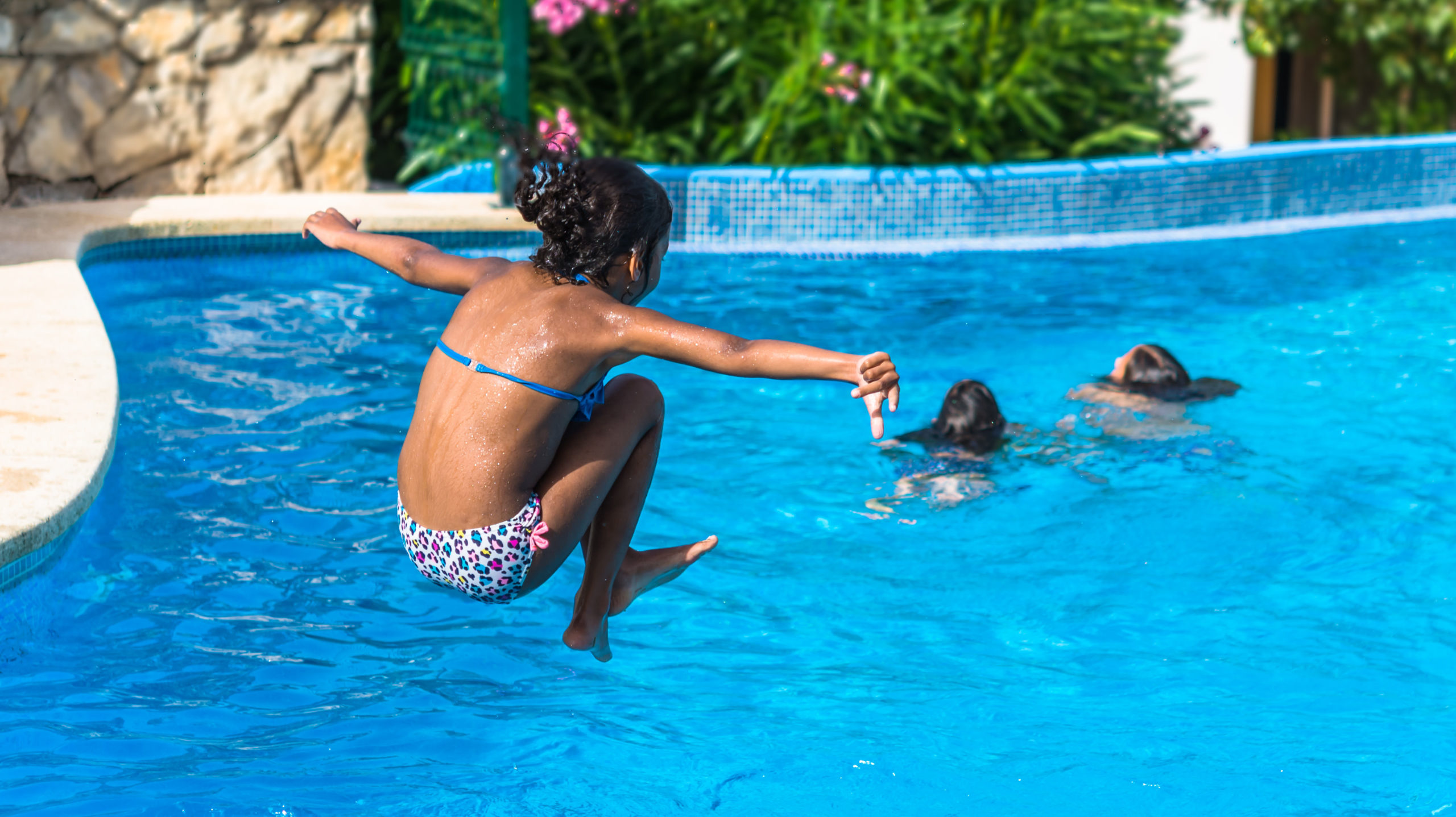Well, here we are. We’re knocking on July’s door and COVID-19 is still running rampant through many of our communities. Maybe you’ve added some socially distanced playdates into the mix by now, or maybe you’re starting to figure out how to safely venture out to a playground. If you haven’t run out of backyard, energy-busting activities yet for your little kids, I am impressed. If you have, here are a few ideas you may not have tried yet.
Some of these are probably new to you and some are fresh twists on old classics.
Musical Colour Hunt
This is an ingenious variation on musical chairs that involves more running and hunting — plus colour-identification, as a nice academic bonus. Beth from @dayswithgrey on Instagram describes what to do: Draw a large circle in chalk and break it into different-coloured sections with whatever colours you have on hand. (Enlist the kids to colour in each section to get the biggest bang for your buck.)
Next, she says, start the music:
As I sat on the other side of the circle, I played the LEGO Movie 2 soundtrack. When it felt right, the music stopped, and the boys ran to grab something from the colour they landed on. When they came back, the music started back up again and around the circle they went.
You can see in the picture that her kids found things like a blue bucket, a green magnifying glass and a white flower to match the colours they landed on.

Jump the River
Anything that makes kids jump a lot is an energy-busting winner. And this idea, from Dave Baldwin at Fatherly, has a little bit of everything: Story-telling, imaginative play and, of course, jumping. It can be played with as few or as many kids as you want (although the more kids, the better the competition); you just need two long, thin objects that can be used as “riverbanks,” such as sticks, string, tape or chalk.
Baldwin explains what to do next:
The game begins by laying down two pieces of string (or sticks or tape or two rows of rocks) parallel to one another a short distance apart. That’s the “river.” After deciding whether you want the kids to practice the standing or running long jump, line them up either on the river’s edge or a few feet back. Depending on the age of the kids, at this point it’s fun to create a story. We’re not just jumping over two sticks, you tell them, but rather we’re on an epic treasure hunt in the middle of the forest and have just come upon this raging river. If we don’t all jump across it, we’ll never find the gold!

Guard the Queen Dodgeball
You probably don’t have enough people in your family for a full-on game of backyard dodgeball, but you may have enough for this more creative and fun version. You just need a soft ball, an open outdoor space and as many kids and adults as you can (safely) gather.
Nina at Grandma Ideas explains the rules:
Select one person to be the queen and one person to be the bodyguard. Form a large circle with the queen and bodyguard standing in the middle. Players throw the ball and try to hit the queen. The queen has to stand in one spot. But, she can lean sideways or stoop to dodge the ball or take a small step sideways. She has to stay in a 0.91 m area.
The bodyguard can go all over the place to block throws thrown at the queen. He can catch the ball, block it, hit it away — ANYTHING to protect the queen from getting hit. If the bodyguard catches the ball, he must toss it to a player in the circle. Play continues until the queen gets hit by the ball. Then, the queen becomes the bodyguard, the bodyguard joins the circle, and the person who threw the ball that hit the queen now becomes the queen.

Jump It
The best energy-burning games are usually those the kids come up with themselves; that’s why I love this activity created by blogger Sarah Dees’ young sons: Jump It. Basically, two players stand across from each other with one of those large, inflatable balls you often find in toy sections. As Dees writes, they take turns throwing the ball at each other; the other person must jump over the ball, dodge the ball or catch the ball. If they get hit, they lose a “life.” They decide at the beginning how many lives they’ll each have and play until someone has lost all their lives.
She says they also enjoy playing these variations:
Ninja Jump It: Same rules, but you try to kick, knee, karate chop, dodge or catch the ball.
Sword Jump It: (This is the greatest version, they say.) Each player has a Nerf sword. The players cannot use their hands in this version, but hit the ball back and forth with their swords.

Shadow Tag
Surely you are familiar with Tag and its cousin, Freeze Tag. But if you and your kids have never played Shadow Tag, you’re missing out on a version of the game that is more difficult and more hilarious. Instead of touching other players to deem them “it,” you have to touch their shadow with your foot. You’ll obviously need to play this on a sunny day — and the closer to noon, the harder the game — but it’s a great option.
For toddlers who may get more tripped up or frustrated by trying to keep track of their shadow and tag others, The Genius of Play offers this (less energy-busting but still fun) alternative:
Instead of running, have all the players pretend to be slow-moving dinosaurs, or other fun, large animals like elephants. This levels the playing field for younger players, but is also fun for older siblings who may be joining in.

Colours
We know you know Marco Polo; but have you ever played a pool game called “Colours”? It’s a similar idea, with a player who is “it” trying to tag the other players, but with a fun variation for when M.P. gets a little old.
Start by deciding which colours you’ll “use” and which you won’t use, lest the game drag on as players choose outliers like cornflower or puce. You can keep it basic by simply using the colours of the rainbow.) Next, the person who is “it” stands near the edge or deck of the pool, facing away from the water. The players in the pool each silently choose their own colour. The person who is “it” starts calling out different colours, slowly and clearly.
It Still Works explains what to do next:
When the one who is “it” guesses someone’s colour, that person quickly swims to the other side of the pool to the safe spot. Everyone else stays where they are.
Tell the child who is “it” to jump in the pool when someone swims away. He must catch the swimmer. If he catches the swimmer before she reaches the safe place on the other side of the pool, then she becomes “it.” Play continues if the child who is “it” doesn’t catch the swimmer. The round ends when someone is caught.
This one is for older kids and strong swimmers, though for safety reasons, it should still be only be played with adult supervision.

Leave a Reply
You must be logged in to post a comment.